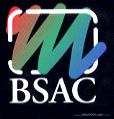What Keeps Me Awake At Night?
Guest Contributor, James Davies
 I’m lucky enough to sit on the British Screen Advisory Council and they recently asked the me the question ‘what keeps you awake at night?” with respect to Posterscope and the out-of-home communications business in general.
I’m lucky enough to sit on the British Screen Advisory Council and they recently asked the me the question ‘what keeps you awake at night?” with respect to Posterscope and the out-of-home communications business in general.
Here’s what I said…
What keeps me awake isn’t to do with restrictions or threats it’s about how we as a business and as an industry, capitalise on the opportunities that are arising from technological developments and changes in people’s behaviour when they are out of their homes with these two points being increasingly interlinked.
What will products such as the iPad mean for OOH media owner and agencies? With more people connected (to other people, information and brands) in more places, what we need is better understanding of how posters, screens, interactive installations, experiential marketing and the like, influence app and web usage on such devices and how they in turn influence other behaviour OOH.
The medium’s ability to drive mobile search is something that we have started exploring and the explosion of smartphones makes this incredibly important for the future of our industry.
A huge amount of social networking is taking place via mobiles. In fact, according to Comscore those who access social networks via mobiles do so for much longer than their PC based counterparts.
Our research projects and campaigns are starting to teach us about the power of OOH media in triggering immediate discussion or advocacy through the mobile web but there is much more to learn. Facebook makes self expression really easy but connecting this to screens in places like bars or city centres adds location based relevance, coupled with crowdsourced data or localised real world fame.
Facebook are about to launch a location based service allowing people to ‘check in’ via a mobile app when they arrive at certain locations, much like Foursquare and this certainly presents an opportunity for OOH media. For example, a study by LocaModa demonstrated that displaying foursquare data feeds on OOH screens doubled the numbers of people ‘checking in’ to those locations. But at the same time apps have the potential to increase the proliferation of location based ads so does that diminish or enhance the uniqueness of posters? How does the OOH industry ensure that this is an opportunity and not a threat ?
This sort of thing is happening everywhere. In 2008 Google applied for a patent to overlay virtual posters onto billboards in it’s Streetview photographs and the principle of online style adserving to digital OOH screens has been talked about for years.
OK, so other people are encroaching on an area historically ‘owned’ by companies like us. But at the same time we’ve been doing the same with initiatives involving mobile apps, social media elements or the placement of billboards in computer games. I’d argue that accepting overlap, striving for collaboration and the creation of new business models is the way to go.
What we are seeing with all of this is convergence and aside from the technologies themselves, there are other factors that act as convergence catalysts with one great example being the Olympics.
2012 has already driven changes in media infrastructure and will continue to do so. One of the main reasons that there are digital advertising screens all over the London Underground is because they will help boost the image of London as a modern city for Olympic visitors.
During the event there will be an increase in consumer demand for the latest associated content and with peoples increased expectation of instant gratification mobile devices and OOH screens can play a very significant role in delivering this.
One concern with a lot of these technological developments is that they can generate huge amounts of data about people’s behaviour OOH. GPS tracking, loyalty cards, travel tickets and even trackable supermarket shopping carts are just a few examples. So what constitutes responsible use of this data? The answers to this question require some careful consideration and are not always obvious.
But whatever we do as a company and as an industry if we try to maximise the extent to which our communications plans add value to people’s OOH lives we will stand the greatest chance of success.
Once we’ve cracked all of this, I guess I’ll sleep better !
James Davies is Director of Hyperspace, Posterscope UK and Chief Strategy Officer, Posterscope USA.

May 28th, 2010 at 15:29 @687
For what ever its worth-
It seems that many of us are concerned about the ever changing DOOH environment i.e., how to stay ahead of the curve with the influx of social media and hand held devices, how then do we adapt a successful strategy?
Successful DOOH networks have a clear vision for the consumer and the data collected through social medai, with a cohesive consumer-oriented concept in place which will build and determine its success, build viewership, engage the consumer by providing a clear action strategy and your network quickly becomes appreciated.
Reason I opted in for this comment is, many of the DOOH providers have missed the point, social media can only help our industry, you have to build viewership, engagement and action strategy = advertising ROI, not the other way around.
Regards,
J Woolsey VMI